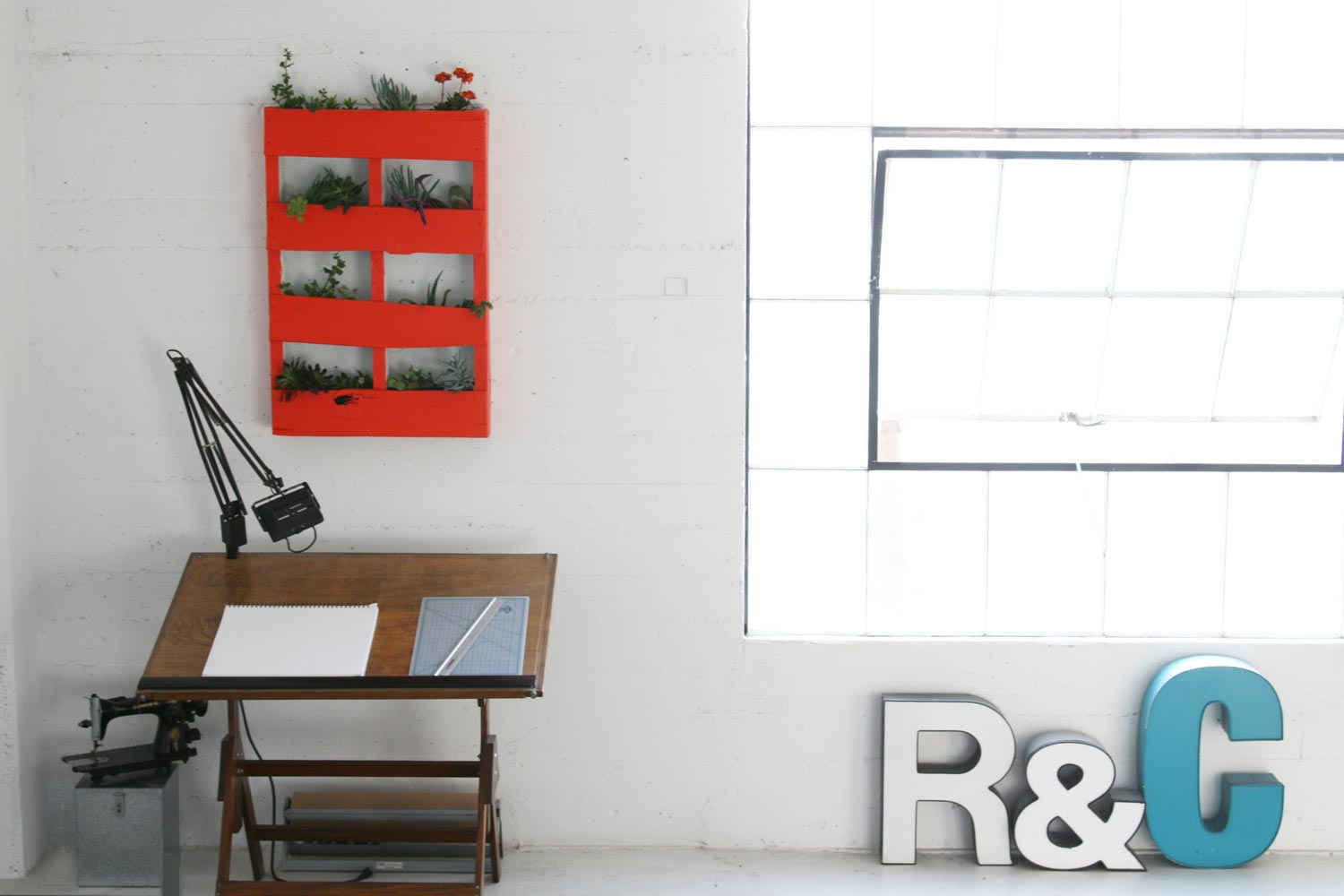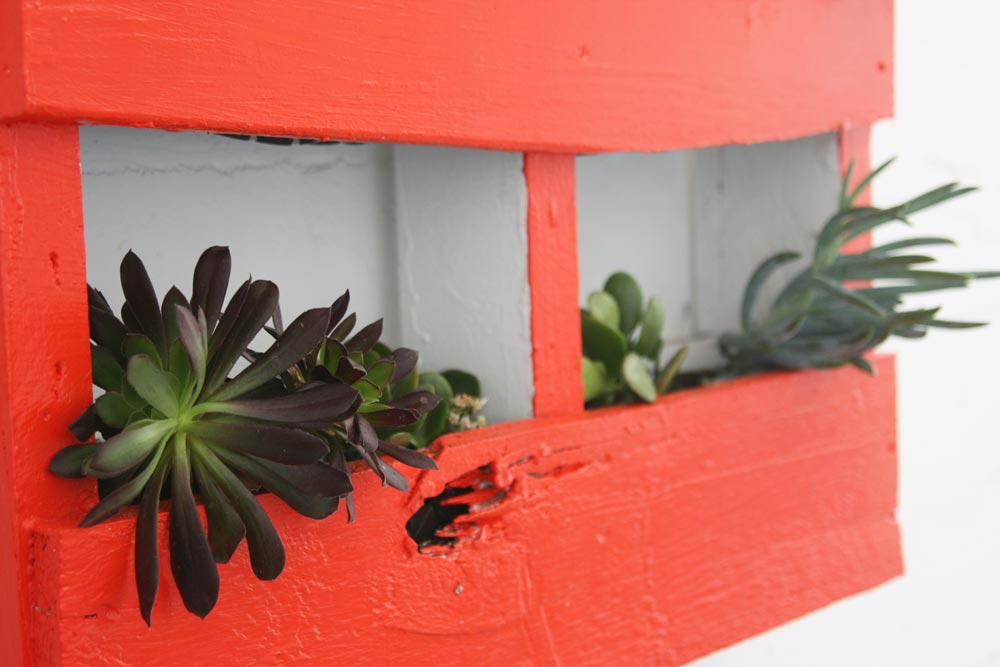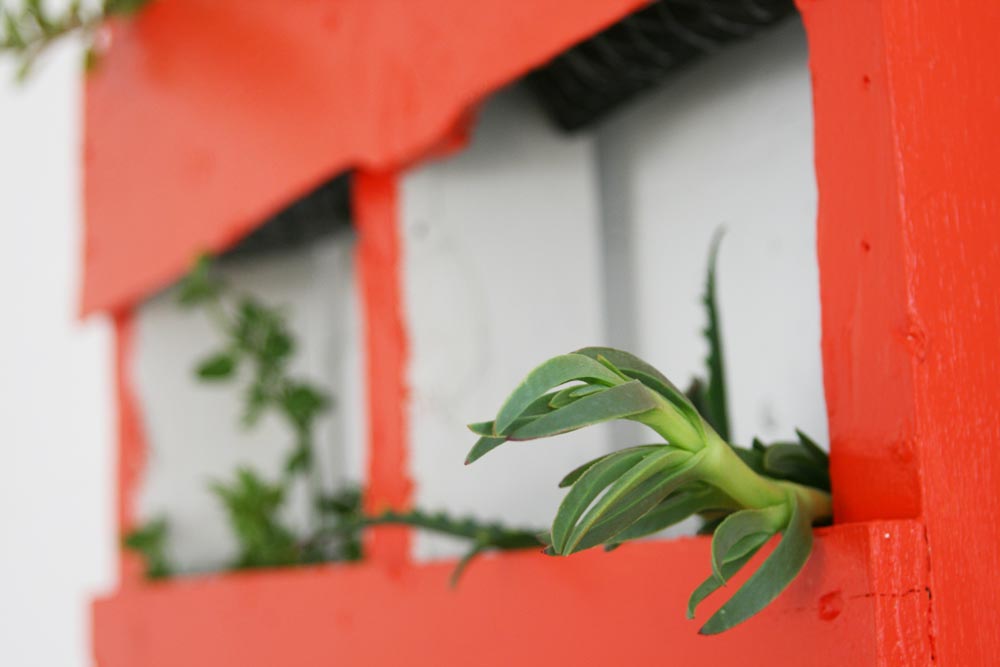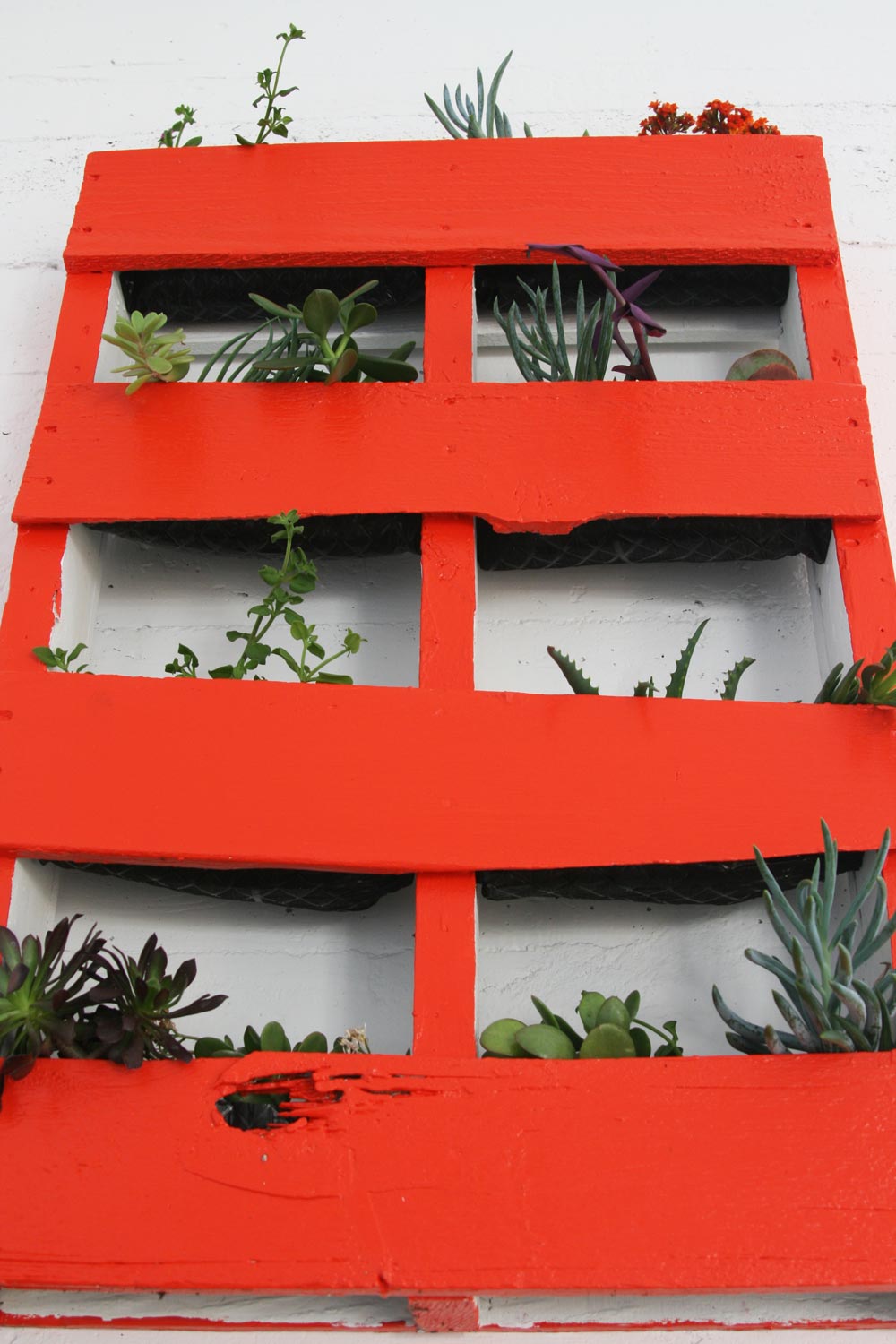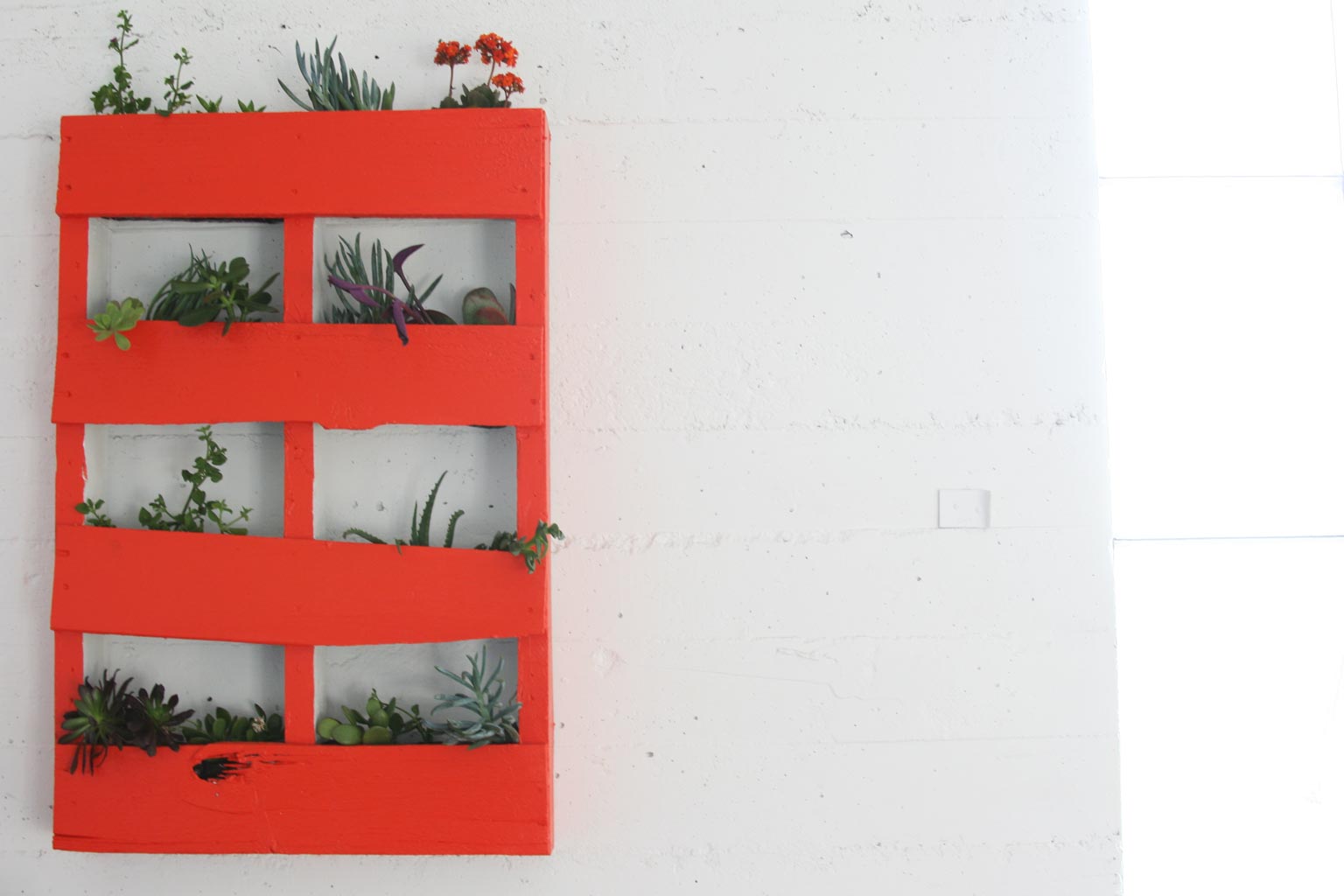In our ongoing effort to fit studio improvements into our usually pretty packed work days, we just completed this wall-mounted palette planter. Yay, us!
Want to make one yourself? Here’s a step-by-step guide:
Step 1: Find an abandoned wooden palette in your neighborhood. Usually, this is pretty easy. Don’t live in a big city? Head down to your local Industrial Way and have a look-around. Still no? Dumpster-diving time.
Step 2: Do not lick or raise your child in found palette—these things are chemically treated and you found this thing on the street or in a dumpster for god’s sake. What kind of parent are you‽
Step 3: Knock out every other plank on the top of the palette. This can be done with a rubber mallet or a hammer or you can pry them off with a crowbar or the like. Watch out for the disease-covered, rusted nails. And don’t worry about harming the remaining panels much—that’s called “rustic charm”.
Step 4: Paint the palette with primer; allow to dry for a day or so; paint the palette with crazy-bright paint; allow to dry.
Step 5: Steal a bunch of succulents from your neighborhood. If you don’t live in Southern California, change this step to “Go to the plant store and buy a bunch of plants”.
Step 6: Buy some tight-weave landscaping material, usually found in the gardening section of hardware stores. The tighter the weave, the better. You want some breathability, but you don’t want to the soil to spill through. Measure the spaces between the two or three (in our case) vertical beams and cut panels of the fabric so that you’ll be able to form rough pockets for the soil and plants, using nails or thumbtacks (easier) to pin the front, back, and both sides so you’ve got more of a thee-dimensional pocket than a two-dimensional pouch.
Step 6: Fill the pockets with soil and carefully arrange the plants, ideally in an artful, adorable manner.
Step 7: This is the tough one. Attach the palette to the wall. If you’ve got shitty drywall, find studs. If you’ve chosen an outer concrete wall like we did, ideally use your trusty hammer drill to drill holes for Red Head wedge anchors or the like. Don’t have a hammer drill? Yeah, we didn’t either. In that case, buy a concrete drill bit and be prepared to stand against the wall drilling for, oh, two or so hours? And it might break your drill’s motor. Concrete, man. Don’t want to bother with all this? We get it. In that case, lean the sucker against a wall and be done with it.
Step 8: Use a water spritz-y thing to saturate the soil around the plants so the succulents (or other plants) will take root.
Step 9: Water according to the types of plants you use and enjoy.
We wish you the best of luck, DIY-ers!
